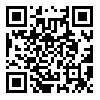目的 探讨根治性膀胱切除术后患者发生尿路造口周围潮湿相关性皮肤损伤(PMASD)的影响因素。方法 选取100例行根治性膀胱切除术治疗的膀胱癌患者作为研究对象,根据术后3个月是否发生PMASD分为发生组与未发生组。收集两组患者的一般资料和临床资料,分析根治性膀胱切除术后患者发生PMASD的影响因素,并绘制受试者工作特征(ROC)曲线评估影响因素的预测价值。结果 根治性膀胱切除术后患者PMASD的发生率为32.00%(32/100)。相比于未发生组,发生组的体质指数、造口渗漏次数更高,自我护理能力测定(ESCA)量表评分更低(P<0.05)。多因素Logistic回归分析结果显示,体质指数、造口渗漏次数、ESCA量表评分是根治性膀胱切除术后患者发生PMASD的影响因素(P<0.05)。ROC曲线结果显示,体质指数、造口渗漏次数、ESCA量表评分预测根治性膀胱切除术后患者发生PMASD的曲线下面积分别为0.921、0.622、0.855,体质指数和ESCA量表评分的曲线下面积大于造口渗漏次数的曲线下面积(P<0.05)。结论 根治性膀胱切除术后患者PMASD的发生率较高,体质指数、造口渗漏次数、ESCA量表评分为根治性膀胱切除术后患者发生PMASD的影响因素,应针对肥胖及自护能力较弱的根治性膀胱切除术后患者采取针对性措施,以降低PMASD的发生率。
广西医学 页码:1490-1494
作者机构:顾磊,本科,副主任护师,研究方向为伤口造口失禁。
基金信息:江苏省肿瘤医院科技发展基金项目(ZH202112);南京市博士后科研资助项目
- 中文简介
- 英文简介
- 参考文献
Objective To explore the influencing factors for the occurrence of urostomy peristomal moisture⁃associated skin damage (PMASD) in patients after radical cystectomy. Methods A total of 100 patients with bladder cancer who were treated with radical cystectomy were selected as the research subjects, and they were divided into occurrence group or non⁃occurrence group according to whether PMASD occurred 3 months after operation or not. The general data and clinical data of patients in both groups were collected, the influencing factors for the occurrence of PMASD in patients after radical cystectomy were analyzed, and the predictive value of influencing factors was evaluated by drawing the receiver operating characteristic (ROC) curve. Results The incidence rate of PMASD in patients after radical cystectomy was 32.00% (32/100). Compared with the non⁃occurrence group, the occurrence group exhibited higher body mass index, the frequency of stoma leakage, whereas a lower score of the Exercise of Self⁃Care Agency (ESCA) scale (P<0.05). The results of multivariate Logistic regression analysis indicated that body mass index, stoma leakage frequency, and ESCA scale score were the influencing factors for the occurrence of PMASD in patients after radical cystectomy (P<0.05). The results of ROC curve interpreted that areas under the curve of body mass index, stoma leakage frequency, and ESCA scale score for predicting the occurrence of PMASD in patients after radical cystectomy were 0.921, 0.622, and 0.855, respectively, and areas under the curve of body mass index and ESCA scale score were larger than those of stoma leakage frequency (P<0.05). Conclusion The incidence rate of PMASD in patients after radical cystectomy is relatively high. Body mass index, stoma leakage frequency, and ESCA scale score are all influencing factors for the occurrence of PMASD in patients after radical cystectomy. Targeted measures should be taken for patients with obesity and weak self⁃care ability after radical cystectomy, so as to reduce the incidence rate of PMASD.
-
无




 注册
注册 忘记密码
忘记密码 忘记用户名
忘记用户名 专家账号密码找回
专家账号密码找回 下载
下载 收藏
收藏
